Balkinization
an unanticipated consequence of
Jack M. Balkin
Balkinization Symposiums: A Continuing List
E-mail:
Jack Balkin:
jackbalkin at yahoo.com
Bruce Ackerman
bruce.ackerman at yale.edu
Ian Ayres
ian.ayres at yale.edu
Corey Brettschneider
corey_brettschneider at brown.edu
Mary Dudziak
mary.l.dudziak at emory.edu
Joey Fishkin
joey.fishkin at gmail.com
Heather Gerken heather.gerken at yale.edu
Abbe Gluck abbe.gluck at yale.edu
Mark Graber
mgraber at law.umaryland.edu
Stephen Griffin
sgriffin at tulane.edu
Jonathan Hafetz
jonathan.hafetz at shu.edu
Jeremy Kessler
jkessler at law.columbia.edu
Andrew Koppelman
akoppelman at law.northwestern.edu
Marty Lederman
msl46 at law.georgetown.edu
Sanford Levinson
slevinson at law.utexas.edu
David Luban
david.luban at gmail.com
Gerard Magliocca
gmaglioc at iupui.edu
Jason Mazzone
mazzonej at illinois.edu
Linda McClain
lmcclain at bu.edu
John Mikhail
mikhail at law.georgetown.edu
Frank Pasquale
pasquale.frank at gmail.com
Nate Persily
npersily at gmail.com
Michael Stokes Paulsen
michaelstokespaulsen at gmail.com
Deborah Pearlstein
dpearlst at yu.edu
Rick Pildes
rick.pildes at nyu.edu
David Pozen
dpozen at law.columbia.edu
Richard Primus
raprimus at umich.edu
K. Sabeel Rahmansabeel.rahman at brooklaw.edu
Alice Ristroph
alice.ristroph at shu.edu
Neil Siegel
siegel at law.duke.edu
David Super
david.super at law.georgetown.edu
Brian Tamanaha
btamanaha at wulaw.wustl.edu
Nelson Tebbe
nelson.tebbe at brooklaw.edu
Mark Tushnet
mtushnet at law.harvard.edu
Adam Winkler
winkler at ucla.edu
Compendium of posts on Hobby Lobby and related cases
The Anti-Torture Memos: Balkinization Posts on Torture, Interrogation, Detention, War Powers, and OLC
The Anti-Torture Memos (arranged by topic)
Recent Posts
The Fourth Amendment in 2020
Just A Few Blogs
ACS Blog
Alas, a Blog
Althouse
Arts and Letters Daily
Atrios (Eschaton)
Bill of Health
Buzzflash.com
Buzz Machine
Cato at Liberty
Juan Cole (Informed Comment)
Concurring Opinions
The Constitution in 2020
Corrente
Crooked Timber
Daily Howler
Daily Kos
Dana Boyd
Brad DeLong
Digby (Hullabaloo)
Discriminations
Daniel Drezner
Kevin Drum (Mother Jones)
Electrolite
En Banc
Eunomia (Daniel Larison)
Fafblog
Michael Froomkin (Discourse.net)
GovLab (Beth Noveck)
Rick Hasen (Election Law)
History News Network
How Appealing
Ignatz (Sam Heldman)
The Importance of (Ernie Miller)
Infolaw
Instapundit
International Economic Law and Policy Blog
IntLawGrrls
Jacob Levy
Jesus' General
Jurisdynamics
The Kitchen Cabinet
Mark Kleiman
Law Blog Central
Larry Lessig
Lawyers, Guns and Money
Liberal Oasis
Brian Leiter's Law School Reports
The Leiter Reports
Marginal Revolution
Megan McArdle
Memeorandum
Metafilter
Mirror of Justice
The New Republic
Newseum
No More Mister Nice Blog
Brendan Nyhan
Opinio Juris
Orcinus
The Originalism Blog
Pandagon
Passport (Foreign Policy)
Overcoming Bias
Political Animal (Washington Monthly)
Political Theory Daily Review
Political Wire (Taegan Goddard)
The Poor Man
Virginia Postrel
Prawfsblawg
Public Reason
Jonathan Rauch
Raw Story
Redstate
ReligiousLeftLaw.com
Reporters Committee For Freedom of the Press
Reproductive Rights Blog
Rothman's Roadmap to the Right of Publicity
SCOTUS Blog
Seeing the Forest
Clay Shirky
The Shifted Librarian
The Situationist
Larry Solum (Legal Theory)
Andrew Sullivan
Talking Points Memo
Talk Left
Tapped
Tbogg
TechPresident
The Paper Chase (Jurist)
Tom Paine
Tom Tomorrow (This Modern World)
Eve Tushnet
Uggabugga
University of Chicago Law School Faculty Blog
Unqualified Offerings
The Volokh Conspiracy
War and Piece (Laura Rozen)
Wampum
Oliver Willis
Wonkette
Written Description
Matthew Yglesias
Yin
Your Choice of Feeds
1. XML
powered by
2. Atom Feed
3. RSS 2.0
The Fourth Amendment in 2020
Guest Blogger
For the Constitution in 2020 conference on The Future of Criminal Justice.
Christopher Slobogin
Over the past 200 years, the Fourth Amendment’s guarantees have been construed largely in the context of what might be called “physical searches”—entry into a house or car, a stop and frisk of a person on the street, or rifling through a person’s private papers. But today, with the introduction of devices that can see through walls and clothes, monitor public thoroughfares twenty-four hours a day, and access millions of records in seconds, police are relying much more heavily on what might be called “virtual searches,” investigative techniques that do not require physical access to premises, people, papers or effects and that can often be carried out covertly from far away. This technological revolution is well on its way to drastically altering the way police go about looking for evidence of crime.
The Supreme Court’s interpretation of the Fourth Amendment has both failed to anticipate this revolution and continued to ignore it.
Most importantly, the Court’s caselaw has made clear that, outside of interceptions of communications content, a Fourth Amendment “search” usually occurs only when there is a physical intrusion of some sort into the suspect’s property. That means that as a constitutional matter neither a warrant nor any level of suspicion is needed to justify most virtual searches. The one exception to this rule other that electronic surveillance, announced in Kyllo v. United States, is when a virtual device, like a $10,000 thermal imager, is aimed at the home interior. Even then no search occurs if the device is in “general public use” (binoculars, nightscopes, $2000 thermal imagers?), or spies what an officer could see from a lawful vantage point or detects only contraband. Thus, without worrying about the Fourth Amendment, police can watch all of our out-of-home activities and many of in-home ones, and also obtain any records of our financial, communication, and other daily transactions that are maintained by third parties.
The Court’s treatment of government actions that it says are Fourth Amendment searches has also vastly enhanced government’s ability to use technology to discover information about its subjects. In particular, the Court’s expansion of what it calls the “special needs” exception (which does away with the warrant and probable cause requirements for a wide array of regulatory and group-based searches) has opened the door to profligate use of technological surveillance. As long as search and seizure programs are not designed to detect “ordinary criminal wrongdoing,” they need merely be “reasonable” attempts at dealing with a “significant” law enforcement problem. This formula apparently exempts from traditional Fourth Amendment requirements not only most administrative inspections carried out by non-police but also technologically-enhanced anti-terrorism programs like data mining (assuming data mining is a search in the first place, which it probably isn’t).
A Different Fourth Amendment?
If reform of the Fourth Amendment were thought to be important as a means of responding to technological developments, the most obvious first step would be to conform the definition of search to its lay meaning of looking into, over or through something in order to find somebody or something. This move, which Justice Scalia himself contemplated in Kyllo, would immediately encompass virtual searches within the ambit of the Fourth Amendment’s protections. Camera surveillance, tracking, targeting places or people with any type of device (regardless of whether it is in general public use or contraband-specific), and accessing records via computer (or in any other manner) all involve searches under this definition.
Reform could not stop there, however. Current Fourth Amendment law also usually requires probable cause for a search. If police attempts to watch a person walk down the street, follow a car on the public highway, or peruse court records or utility bills all required probable cause, law enforcement would come to a screeching halt. It may have been to avoid such a disaster that most members of the Court, including many of its liberal members, have been willing to declare that these investigative techniques are immune from constitutional review.
But there is a compromise position, suggested by the Fourth Amendment itself. After all, the text of that amendment only requires that searches and seizures be “reasonable.” It does not require probable cause or any other particular quantum of suspicion.
I have argued elsewhere that the Fourth Amendment’s reasonableness inquiry should adhere to a proportionality principle (Privacy at Risk: The New Government Surveillance and the Fourth Amendment (2007), http://ssrn.com/abstract=1026614). The idea of calibrating the justification for an action by reference to its impact on the affected party permeates most other areas of the legal system. For instance, at the adjudication stage the law assigns increasingly heavier burdens of proof (preponderance, clear and convincing, proof beyond a reasonable doubt) as the consequences of the adjudication grow harsher. Equal protection law is famous for its three tiers of scrutiny depending on the interest involved. The proportionality principle has even found its way into the Supreme Court’s Fourth Amendment caselaw. It provides the best explanation, for example, for why arrests and searches of houses require probable cause, while stops and frisks only require reasonable suspicion. As the Court stated in Terry v. Ohio, the case that established this particular hierarchy, “there can be ‘no ready test for determining reasonableness other than by balancing the need to search against the invasion which the search entails.’” Unfortunately, the Court has applied this principle only haphazardly and, when it does apply it, inconsistently.
A more formal adoption of the proportionality principle would state that, for every government action that implicates the Fourth Amendment, government must demonstrate cause to search—meaning a level of certainty that evidence of wrongdoing will be found—roughly proportionate to the intrusiveness of the search. Given the history of the Fourth Amendment, the baseline rule for application of the proportionality principle would be that searches of houses and similarly intrusive actions require probable cause. But less intrusive searches and seizures could be authorized on something less than probable cause. For instance, the Court is clearly correct in its intuition that police viewing of public activities are generally less intrusive than police entries into houses. Camera surveillance and tracking of public movements, use of binoculars to look through a picture window, or perusal of a record of an individual’s food purchases would not require probable cause under proportionality reasoning.
In contrast to the Supreme Court’s jurisprudence, however, only the most minimal intrusions would be exempt from Fourth Amendment regulation. Thus, while randomly surveying the public streets with a camera might be untouched by the Fourth Amendment, using cameras or tracking devices to target an individual would trigger its guarantees (albeit perhaps only in the sense that an articulable reason for the targeting would be required). In further contrast to the Supreme Court’s approach, proportionality reasoning dictates that virtual searches which are as invasive as entry into the home would be permitted only upon a high degree of suspicion. For instance, if empirical research on lay views is to be believed (see Slobogin, Government Data Mining and the Fourth Amendment, 75 U.Chi. L. Rev. 317 (2008), http://ssrn.com/abstract=1001972) society associates bank and phone records with a high degree of privacy. Thus, contrary to Court precedent, police would have to demonstrate reasonable suspicion or perhaps even probable cause before gaining access to such information.
Exceptions
At least two exceptions to the proportionality principle should be recognized, however. When the purpose of a search is to prevent significant, specific, and imminent danger (think: Jack Bauer), society’s interest in protecting itself is sufficiently strong that the justification normally required by the proportionality principle should be relaxed. And when a search or seizure is of large numbers of people—when, in other words, search and seizure programs are involved—the usual Fourth Amendment paradigm focusing on individualized suspicion does not work well. In Government Dragnets (Law & Contemp. Probs., forthcoming; http://ssrn.com/abstract=1640108), I argue that, unless the dragnet involves a full-scale search of homes or mass arrests, this situation should initially be governed by political process theory. As laid out by Richard Worf, political process theory would permit a group search or seizure if it is authorized by legislation that requires neutral or random selection criteria and avoids targeting groups with insufficient access to the political process.
When these requirements are not met (which has often been the case with the group search and seizure cases decided by the Supreme Court) the proportionality principle should be adapted to group settings. Unless the intrusion occasioned by these blunderbuss intrusions is de minimis, proportionality reasoning would require some concrete justification beyond the type of broad pronouncements about “law enforcement problems” on which the Court usually relies. More specifically, proportionality analysis in the group context could require what might be called “generalized suspicion” (to be contrasted with individualized suspicion). Generalized suspicion can be thought of as a measure of a program’s success or “hit rate,” which under proportionality analysis must match its intrusiveness. For instance, in Edmond v. Indianapolis, a roadblock case, police searches produced evidence of drug crime in 5% of the cars stopped. Whether that potential hit rate would be sufficient to justify the intrusion associated with a roadblock would depend on how that intrusion compares to other police actions, such as arrests, that require probable cause (which might require a hit rate of about 50%), and field investigation stops that require reasonable suspicion (which has been quantified at around 30%).
A requirement of generalized suspicion proportionate to the intrusion visited on individuals in the group would force the government to produce concrete justification for its search and seizure programs. Assessment of hit rates might have to be speculative if a particular type of group search or seizure has never been attempted. But presumably a program instituted in good faith is motivated by the perception that a significant crime problem exists. In the absence of such facts (and assuming the danger exception does not apply) courts applying proportionality analysis would be leery of finding that a group investigation is justified.
This is an extremely brief summary of a book and two articles. I’ll be glad to expand on anything that occasions comment.
Christopher Slobogin is Milton Underwood Professor of Law, Vanderbilt University Law School. You can reach him by e-mail at christopher.slobogin at vanderbilt.edu.
Posted
7:59 AM
by Guest Blogger [link]
Books by Balkinization Bloggers

Linda C. McClain and Aziza Ahmed, The Routledge Companion to Gender and COVID-19 (Routledge, 2024)

David Pozen, The Constitution of the War on Drugs (Oxford University Press, 2024)

Jack M. Balkin, Memory and Authority: The Uses of History in Constitutional Interpretation (Yale University Press, 2024)
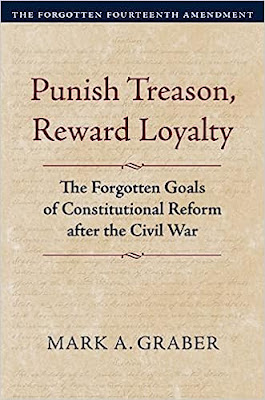
Mark A. Graber, Punish Treason, Reward Loyalty: The Forgotten Goals of Constitutional Reform after the Civil War (University of Kansas Press, 2023)
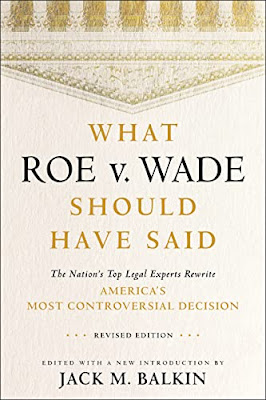
Jack M. Balkin, What Roe v. Wade Should Have Said: The Nation's Top Legal Experts Rewrite America's Most Controversial Decision - Revised Edition (NYU Press, 2023)

Andrew Koppelman, Burning Down the House: How Libertarian Philosophy Was Corrupted by Delusion and Greed (St. Martin’s Press, 2022)

Gerard N. Magliocca, Washington's Heir: The Life of Justice Bushrod Washington (Oxford University Press, 2022)
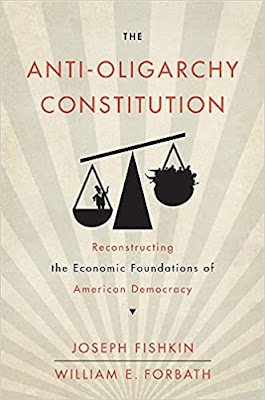
Joseph Fishkin and William E. Forbath, The Anti-Oligarchy Constitution: Reconstructing the Economic Foundations of American Democracy (Harvard University Press, 2022)
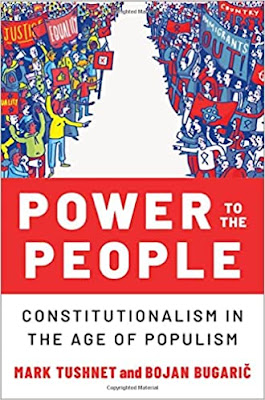
Mark Tushnet and Bojan Bugaric, Power to the People: Constitutionalism in the Age of Populism (Oxford University Press 2021).

Mark Philip Bradley and Mary L. Dudziak, eds., Making the Forever War: Marilyn B. Young on the Culture and Politics of American Militarism Culture and Politics in the Cold War and Beyond (University of Massachusetts Press, 2021).

Jack M. Balkin, What Obergefell v. Hodges Should Have Said: The Nation's Top Legal Experts Rewrite America's Same-Sex Marriage Decision (Yale University Press, 2020)

Frank Pasquale, New Laws of Robotics: Defending Human Expertise in the Age of AI (Belknap Press, 2020)

Jack M. Balkin, The Cycles of Constitutional Time (Oxford University Press, 2020)

Mark Tushnet, Taking Back the Constitution: Activist Judges and the Next Age of American Law (Yale University Press 2020).

Andrew Koppelman, Gay Rights vs. Religious Liberty?: The Unnecessary Conflict (Oxford University Press, 2020)

Ezekiel J Emanuel and Abbe R. Gluck, The Trillion Dollar Revolution: How the Affordable Care Act Transformed Politics, Law, and Health Care in America (PublicAffairs, 2020)

Linda C. McClain, Who's the Bigot?: Learning from Conflicts over Marriage and Civil Rights Law (Oxford University Press, 2020)
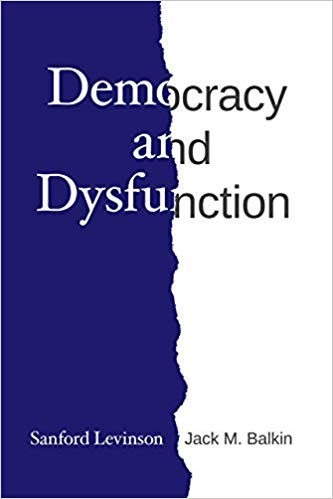
Sanford Levinson and Jack M. Balkin, Democracy and Dysfunction (University of Chicago Press, 2019)

Sanford Levinson, Written in Stone: Public Monuments in Changing Societies (Duke University Press 2018)

Mark A. Graber, Sanford Levinson, and Mark Tushnet, eds., Constitutional Democracy in Crisis? (Oxford University Press 2018)

Gerard Magliocca, The Heart of the Constitution: How the Bill of Rights became the Bill of Rights (Oxford University Press, 2018)

Cynthia Levinson and Sanford Levinson, Fault Lines in the Constitution: The Framers, Their Fights, and the Flaws that Affect Us Today (Peachtree Publishers, 2017)

Brian Z. Tamanaha, A Realistic Theory of Law (Cambridge University Press 2017)

Sanford Levinson, Nullification and Secession in Modern Constitutional Thought (University Press of Kansas 2016)

Sanford Levinson, An Argument Open to All: Reading The Federalist in the 21st Century (Yale University Press 2015)

Stephen M. Griffin, Broken Trust: Dysfunctional Government and Constitutional Reform (University Press of Kansas, 2015)

Frank Pasquale, The Black Box Society: The Secret Algorithms That Control Money and Information (Harvard University Press, 2015)

Bruce Ackerman, We the People, Volume 3: The Civil Rights Revolution (Harvard University Press, 2014)
Balkinization Symposium on We the People, Volume 3: The Civil Rights Revolution

Joseph Fishkin, Bottlenecks: A New Theory of Equal Opportunity (Oxford University Press, 2014)

Mark A. Graber, A New Introduction to American Constitutionalism (Oxford University Press, 2013)

John Mikhail, Elements of Moral Cognition: Rawls' Linguistic Analogy and the Cognitive Science of Moral and Legal Judgment (Cambridge University Press, 2013)

Gerard N. Magliocca, American Founding Son: John Bingham and the Invention of the Fourteenth Amendment (New York University Press, 2013)

Stephen M. Griffin, Long Wars and the Constitution (Harvard University Press, 2013)

Andrew Koppelman, The Tough Luck Constitution and the Assault on Health Care Reform (Oxford University Press, 2013)

James E. Fleming and Linda C. McClain, Ordered Liberty: Rights, Responsibilities, and Virtues (Harvard University Press, 2013)
Balkinization Symposium on Ordered Liberty: Rights, Responsibilities, and Virtues

Andrew Koppelman, Defending American Religious Neutrality (Harvard University Press, 2013)

Brian Z. Tamanaha, Failing Law Schools (University of Chicago Press, 2012)

Sanford Levinson, Framed: America's 51 Constitutions and the Crisis of Governance (Oxford University Press, 2012)

Linda C. McClain and Joanna L. Grossman, Gender Equality: Dimensions of Women's Equal Citizenship (Cambridge University Press, 2012)

Mary Dudziak, War Time: An Idea, Its History, Its Consequences (Oxford University Press, 2012)

Jack M. Balkin, Living Originalism (Harvard University Press, 2011)

Jason Mazzone, Copyfraud and Other Abuses of Intellectual Property Law (Stanford University Press, 2011)

Richard W. Garnett and Andrew Koppelman, First Amendment Stories, (Foundation Press 2011)

Jack M. Balkin, Constitutional Redemption: Political Faith in an Unjust World (Harvard University Press, 2011)

Gerard Magliocca, The Tragedy of William Jennings Bryan: Constitutional Law and the Politics of Backlash (Yale University Press, 2011)

Bernard Harcourt, The Illusion of Free Markets: Punishment and the Myth of Natural Order (Harvard University Press, 2010)

Bruce Ackerman, The Decline and Fall of the American Republic (Harvard University Press, 2010)
Balkinization Symposium on The Decline and Fall of the American Republic

Ian Ayres. Carrots and Sticks: Unlock the Power of Incentives to Get Things Done (Bantam Books, 2010)

Mark Tushnet, Why the Constitution Matters (Yale University Press 2010)
Ian Ayres and Barry Nalebuff: Lifecycle Investing: A New, Safe, and Audacious Way to Improve the Performance of Your Retirement Portfolio (Basic Books, 2010)
.jpg)
Jack M. Balkin, The Laws of Change: I Ching and the Philosophy of Life (2d Edition, Sybil Creek Press 2009)

Brian Z. Tamanaha, Beyond the Formalist-Realist Divide: The Role of Politics in Judging (Princeton University Press 2009)
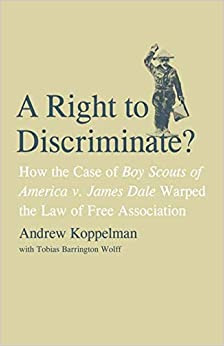
Andrew Koppelman and Tobias Barrington Wolff, A Right to Discriminate?: How the Case of Boy Scouts of America v. James Dale Warped the Law of Free Association (Yale University Press 2009)

Jack M. Balkin and Reva B. Siegel, The Constitution in 2020 (Oxford University Press 2009)
Heather K. Gerken, The Democracy Index: Why Our Election System Is Failing and How to Fix It (Princeton University Press 2009)

Mary Dudziak, Exporting American Dreams: Thurgood Marshall's African Journey (Oxford University Press 2008)

David Luban, Legal Ethics and Human Dignity (Cambridge Univ. Press 2007)

Ian Ayres, Super Crunchers: Why Thinking-By-Numbers is the New Way to be Smart (Bantam 2007)

Jack M. Balkin, James Grimmelmann, Eddan Katz, Nimrod Kozlovski, Shlomit Wagman and Tal Zarsky, eds., Cybercrime: Digital Cops in a Networked Environment (N.Y.U. Press 2007)
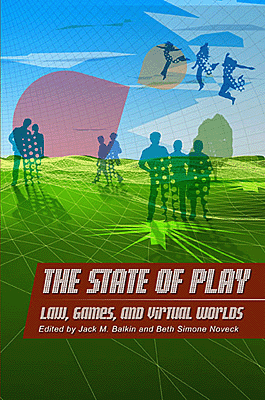
Jack M. Balkin and Beth Simone Noveck, The State of Play: Law, Games, and Virtual Worlds (N.Y.U. Press 2006)

Andrew Koppelman, Same Sex, Different States: When Same-Sex Marriages Cross State Lines (Yale University Press 2006)
Brian Tamanaha, Law as a Means to an End (Cambridge University Press 2006)
Sanford Levinson, Our Undemocratic Constitution (Oxford University Press 2006)
Mark Graber, Dred Scott and the Problem of Constitutional Evil (Cambridge University Press 2006)
Jack M. Balkin, ed., What Roe v. Wade Should Have Said (N.Y.U. Press 2005)
Sanford Levinson, ed., Torture: A Collection (Oxford University Press 2004)
Balkin.com homepage
Bibliography
Conlaw.net
Cultural Software
Writings
Opeds
The Information Society Project
BrownvBoard.com
Useful Links
Syllabi and Exams